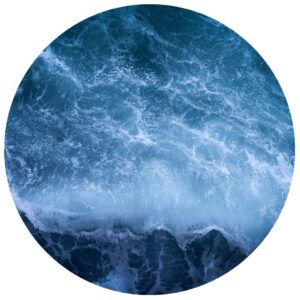Njörðr / Njord belongs to the tribe of the Vanir and is perhaps best known as being the father of Freya. Njörðr / Njord is mentioned in the various local sites across Scandinavia and in both Eddas.
Is Njord the same as Poseidon?
Njörðr / Njord is a Norse variant of the Continental Germanic Nerthus, associated especially with fertility, and plentiful harvest of both game and crops. In the Prose Edda, we learn about Njörðr’s / Njord’s forces in ruling over fire and the sea (and fish according to 18th Century Norwegian Folklore), the movement of the winds.
Njord and Skadi
In the Gylfaginning, we learn about Njörðr’s return from the mountains when his wife Skaði said:
“Sleep I could not
on the sea beds
for the screeching of the bird.
That gull wakes me
when from the wide sea
he comes each morning.”
(Byock, 2006, Dumézil, 1973).

Njörðr / Njord survived into modern times in Scandinavian Folklore particularly connected to the ‘sea-people’, Norwegian havmennesker. This has been mentioned by scholar George Dumézil, who bestows plentiful fish for fishermen and rules of the weather for seafarers.
(George Dumézil, 1973).
What was Njord god of?
Roman historian Cornelius Tacitus mentioned the worship of Nerthus among the Germanic tribes in his ‘Germania’, where he says that:
‘By contrast, the Langobardi are distinguished by being few in number. Surrounded by many mighty peoples they have protected themselves not by submissiveness but by battle and boldness. Next to them come the Ruedigni, Aviones, Anglii, Varini, Eudoses, Suarines, and Huitones, protected by river and forests. There is nothing especially noteworthy about these states individually, but they are distinguished by a common worship of Nerthus, that is, Mother Earth, and believes that she intervenes in human affairs and rides through their peoples. There is a sacred grove on an island in the Ocean, in which there is a consecrated chariot, draped with cloth, where the priest alone may touch. He perceives the presence of the goddess in the innermost shrine and with great reverence escorts her in her chariot, which is drawn by female cattle. There are days of rejoicing then and the countryside celebrates the festival, wherever she designs to visit and to accept hospitality.’
